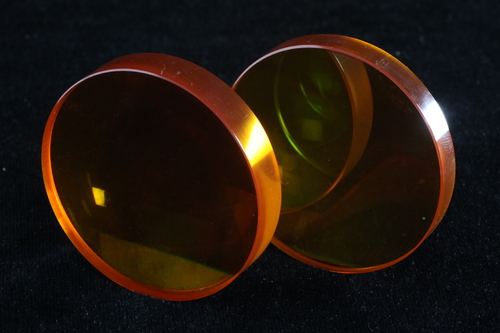

Optical Sapphire Protective Windows
Workers working at high altitudes now often burn some welding gas, but because of the irritating white light during the firing process, this is very harmful to the eyes and will cause various eye diseases over time.
Therefore, people have developed an item that can protect the eyes, that is, the sapphire protective film. The glasses made with it have a good protective effect on the eyes, so many people use them.

The sapphire protective film is also called the sapphire protective window. It is a special window used to protect the observer, the inside of the instrument and the inside of the container by using the pressure, abrasion, and high temperature characteristics of sapphire. It has ultra-high surface hardness and chemical resistance, can transmit wavelengths from UV to mid-infrared, and is thinner and stronger than standard glass windows.
First of all, when choosing these materials, you should check whether the manufacturer is formal, and whether there is a trademark and safety verification of the merchant. You can personally use these materials to see if their quality is good, whether they are stable, and whether the appearance of the color characteristics is distinctive, after these observations and use, a good product can be selected.
Zinc Selenide (ZnSe) Optical Windows
Ideal for Thermal Imaging
Zinc Selenide has low IR absorption, and is transparent across a very wide 0.6-16 µm spectral range. This is advantageous for thermal imaging, where temperatures of remote objects are ascertained via their blackbody radiation spectrum. Long wavelength transparency is crucial for imaging room temperature objects, which radiate at peak wavelength of approximately 10 µm with very low intensity.
3 to 12 µm Broadband Coating
ZnSe has a high index of refraction which requires an anti-reflection coating to achieve high transmission. Our broadband AR.20 coating is optimized for 3-12 µm and can withstand up to 100 kW/cm2 for 10.6 µm CW laser beam with >113 µm spot diameter and <30 sec duration.

Zinc Selenide windows are ideally suited for thermally demanding environments. The windows are both low in absorption and high in thermal shock, making them usable even in high power CO2 laser applications. These windows may also be used in applications such as IR imaging in scientific, military or search and rescue applications.

Zinc Selenide material is formed with extremely high purity by molecular beam epitaxy. It is a soft material, making it resilient and tolerant of thermal shock. It is also a toxic material. Great care must be taken in handling and cleaning the material. Wear gloves at all times to avoid risk of contamination. Hold only the edge to prevent scratches. Wash hands after use.
This is toxic by ingestion and inhalation of dust, with a cumulative effect. It also affects the nervous system. Particular care must be exercised when machining and creating dust or particles. Inhalation of dust may irritate the respiratory system. Acute selenium poisoning produces central nervous system effects, which include nervousness, convulsions and drowsiness. Other signs of intoxication can include skin eruptions, lassitude, gastrointestinal distress, teeth that are discolored or decayed, odorous ("garlic") breath. Chronic exposure by inhalation can produce symptoms that include pallor, coating of the tongue, anemia, irritation of the mucosa, lumbar pain, liver and spleen damage, as well as any of the other previously mentioned symptoms. Chronic contact with selenium compounds may cause garlic odor of breath and sweat, dermatitis, and moderate emotional instability.
Name: Sales Department
Mobile:+8613019214973
Tel:86-431-81905988
Whatsapp:+8618043023344
Email:sales@china-optics.biz
Add:No.3 Shenzhen street, Economic and Technology Development Zone ,Changchun China
We chat
